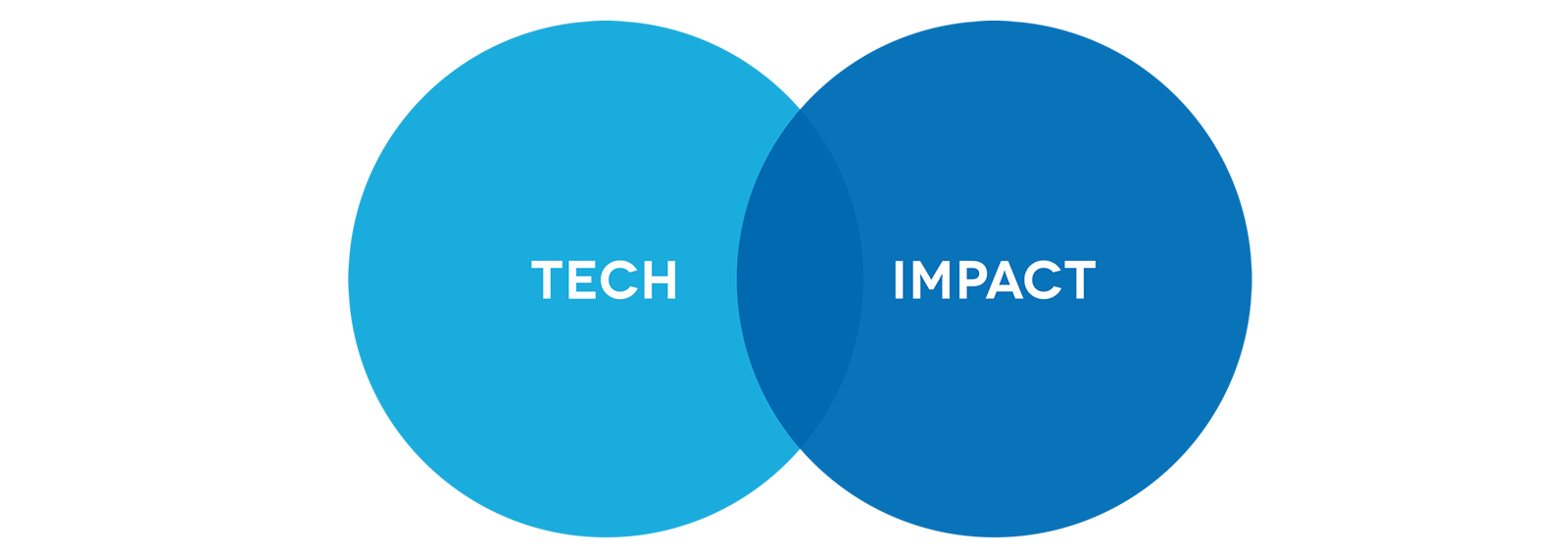Episodes
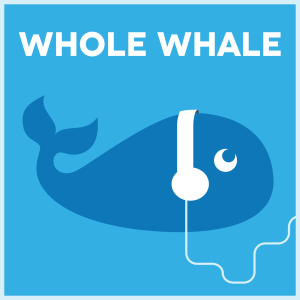
53 minutes ago
53 minutes ago
- The overhead debate has historically hurt nonprofits.
- Metrics for evaluating nonprofits are evolving beyond just overhead.
- Nonprofits must strategically manage their overhead to thrive.
- Advocacy and strategic planning are crucial in times of funding cuts.
- Mergers can be a viable solution for struggling nonprofits.
- Effective altruism has its limitations and assumptions.
- Measuring outcomes is a significant challenge for many nonprofits.
- Data can help bridge the gap between outputs and meaningful outcomes.
- Storytelling remains a powerful tool for nonprofits.
- Future nonprofit leaders must be humble and open to learning.

Sunday Jul 06, 2025
Sunday Jul 06, 2025
In this week's episode of the Nonprofit Newsfeed, George and Nick delve into the critical issue of donor data ownership within donation platforms. They reveal that for 25% of platforms, nonprofits cannot seamlessly migrate recurring donors, potentially severing relationships with monthly contributors. George emphasizes the importance of understanding donor payment tokens and the impact of being locked into platforms without data portability.
The episode also touches on the philanthropic landscape, highlighting Warren Buffett's record $6 billion donation to various foundations and the ongoing influence of billionaire philanthropy. This brings into focus the necessity of smart, long-term philanthropic planning to avoid potential pitfalls of sudden funding withdrawals.
Moreover, the conversation shifts to the legislative sphere, discussing the ramifications of the "big, beautiful bill" that threatens significant cuts to Medicaid and SNAP benefits, impacting millions of Americans. The hosts underline the urgency for nonprofits to prepare for increased demand on their services and the potential closures of rural hospitals and food banks due to these cuts.
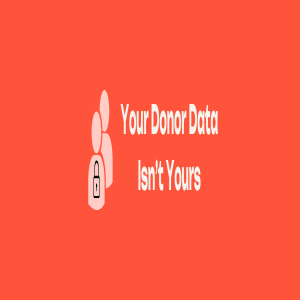
Monday Jun 30, 2025
Monday Jun 30, 2025
In this episode of the Whole Whale podcast, host George Weiner speaks with Sal Alpietro, Chief Community Officer at Fundraise Up, about a critical issue affecting nonprofits: the ownership and transfer of payment tokens for monthly donors. Sal shares alarming stories of nonprofits facing exorbitant fees and resistance when trying to move donor data between platforms. They discuss the importance of asking the right questions before signing contracts with donation platforms and the potential financial and operational risks of not doing so. Sal also shares advice on best practices and offers insights into recent developments at Fundraise Up.
--
If your nonprofit does not own the payments portal account (IE Stripe, Braintree, Paypal) and it has monthly donors, then it may not actually “own” those donors.
While standard donation platform contracts allow for donor contact information to be exported, they may not allow the Donor Payment Tokens that allow for ongoing monthly donations to be exported. This means your nonprofit would lose the ability to continue to charge monthly donations from donors that had opted-in to donate if you moved platforms. Donation platforms range from small to huge fees to export this data, while some block this ability all together.
- Here is a great LinkedIn explanation of this
- Here is information going back to 2018 from the Agitator calling out this monthly donor lockup issue.
“I have seen nonprofits literally in tears when they were told they needed to payup $30k to get permission to migrate their monthly donorbase built over years.”
Salvatore Salpietro, Chief Community Officer, Fundraise Up

Monday Jun 23, 2025
NO KINGS Protests Draw Millions In Major Civil Society Action (news)
Monday Jun 23, 2025
Monday Jun 23, 2025
In this episode of the Nonprofit Newsfeed, hosts George and Nick explore the intricacies of recent mass mobilizations and the challenges facing nonprofits.
The podcast focuses on the recent "No Kings" protests, a massive mobilization across all 50 states with participation from an estimated 5 to 7 million people. Nick shares his firsthand experience at the New York protest, emphasizing the diverse and passionate turnout despite the rain. The event's success hinged on strategic digital organizing through platforms like Mobilize Us and support from major organizations such as the ACLU and Indivisible. A key takeaway is the power of peaceful protest and the impressive organization behind such large-scale events, including a comprehensive 17-page guide for rally hosts.
The discussion transitions to the broader theme of attacks on civil society, both domestically and globally. An article from Lawfare highlights how authoritarian regimes worldwide, including those in Nicaragua, Turkey, Hungary, and Russia, are suppressing civil society under the guise of national security. This pattern is mirrored in the U.S., where political rhetoric is increasingly used to justify crackdowns on nonprofits and civil liberties.

Friday May 30, 2025
Understanding The “Big Beautiful Bill’s” Nonprofit Provisions (news)
Friday May 30, 2025
Friday May 30, 2025
This week on the Nonprofit Newsfeed by Whole Whale, George and Nick delve into the ramifications of the GOP's newly proposed tax bill and its potential impact on the nonprofit sector. As the bill progresses from the House to the Senate, nonprofits face several looming challenges. These include the "foundation tax bomb," which proposes a tiered excise tax on foundation assets that could drastically reduce grant-making capacities, and a disincentive for major donors, which might discourage wealthy contributions. Smaller nonprofits are particularly at risk due to a proposed 1% minimum giving threshold that could eliminate tax incentives for small businesses. This, coupled with increased taxes on nonprofit payrolls, paints a grim picture for nonprofit funding and operations.
In a shift from fiscal policies, the episode also critiques the College Board for allegedly straying from its nonprofit mission. Originally aimed at democratizing college access, the College Board is now criticized for operating like a corporation, heavily lobbying to maintain its monopoly over standardized testing. This raises broader questions about mission drift in nonprofits.
On a brighter note, the episode concludes with a feel-good story about the successful reintroduction of otters in New Mexico's Rio Grande, thanks to a partnership between the New Mexico Department of Game and Fish and the nonprofit Amigos Bravos. This effort highlights the positive impact of public-nonprofit collaborations on local ecosystems.

Wednesday May 21, 2025
Microsoft Pulls Free, Donated Software Licenses To Nonprofits 📊💰 (news)
Wednesday May 21, 2025
Wednesday May 21, 2025
In this week's episode of the Nonprofit Newsfeed from Whole Whale, hosts Nick and George focus on significant shifts in nonprofit tech strategy and community recognition initiatives.
Main Topics:
-
Microsoft's Software Grant Changes:
- Microsoft announced the end of its decade-long grant program providing free Microsoft 365 business premium accounts and Office 365 E1 licenses to around 400,000 nonprofits. This change, effective for renewals on or after July 1, 2025, will require nonprofits to transition to paid licenses with only two months' notice.
- The financial impact is notable, especially for smaller organizations with minimal revenue, where the cost could represent 1-2% of their operating expenses.
- George and Nick discuss the broader implications, including the risks of dependency on single tech solutions and the potential stifling of open-source development.
-
Whole Whale's Foundation Study:
- Whole Whale released its 2020-2024 foundation study, analyzing 1,600 US foundations with over $25 million in revenue. The study offers insights into grant distribution, advertising, and promotion expenses, highlighting sectors like arts, education, and legal aid as lower recipients of funding.
- The study is a valuable resource for nonprofits to understand funding landscapes and strategize accordingly.
-
Legislative Updates:
- Recent developments in the GOP's "one big beautiful bill" indicate the removal of a controversial provision that threatened nonprofit tax-exempt statuses. This provision allowed for revocation without due process and had raised significant concerns within the nonprofit sector.
- Advocacy efforts from organizations like the ACLU and the Council for Nonprofits were instrumental in this outcome, though vigilance remains necessary as the bill progresses.
-
United Way's Courage Project:
- The United Way launched a $5 million initiative to honor community heroes through grants of up to $50,000. Initial recipients include teachers who defended students against ICE agents and organizations supporting immigrants.
- This project underscores the importance of recognizing and supporting grassroots efforts that uphold community values and justice.
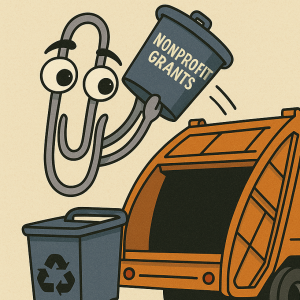
Wednesday May 21, 2025
Alert: Microsoft 365 Grant Cancelled & What you need to know
Wednesday May 21, 2025
Wednesday May 21, 2025
Understanding Microsoft Nonprofit Licensing Changes: Survival Guide and Solutions In this episode, Joshua Pesky, the Chief Product Officer at RoundTable, discusses with George the partial termination of Microsoft's grants program around Office 365 licenses. The discussion covers the impact on nonprofits, the timeline for changes, and possible solutions for affected organizations. Joshua explains the importance of checking license statuses through the admin portal and suggests alternatives like using web applications, Google Suites, or open-source software to mitigate costs. The episode also delves into the broader implications of tech expenses in the nonprofit sector and offers practical advice for managing these upcoming changes. 00:00 Introduction and Overview 00:02 Microsoft's Licensing Changes Explained 01:19 Impact on Organizations 02:37 Timeline and Deadlines 03:09 Options and Solutions 05:37 Navigating the Admin Portal 09:03 Financial Implications 09:50 Nonprofit Sector Challenges 11:17 Security and Obfuscation 12:10 Practical Advice and Final Thoughts 17:18 Survival Guide and Final Remarks

Sunday May 18, 2025
Taxes & Bill(s) & Foundations, oh my! (news)
Sunday May 18, 2025
Sunday May 18, 2025
Gates Foundation's Bold Plan and Legislative Challenges for Nonprofits
In this week's episode of the Nonprofit Newsfeed, George and Nick dive into significant developments affecting the nonprofit sector. The discussion kicks off with Bill Gates' groundbreaking announcement regarding the Gates Foundation, the largest American foundation by asset volume. Gates revealed plans to dissolve the foundation by December 2045, aiming to spend down its entire endowment of over $200 billion. The foundation will focus on three key goals: reducing preventable maternal and childhood deaths, eradicating deadly infectious diseases, and alleviating poverty. This decision is driven by cuts in U.S. foreign aid and the pressing need for immediate action in health and human development.
Gates' approach reflects a shift in philanthropy, emphasizing immediate impact over legacy preservation, reminiscent of Mackenzie Scott's philanthropic strategy. This move is seen as both radical and necessary, aligning with the current urgency in addressing global challenges.
The episode also covers legislative developments that could impact nonprofits. A provision in the House budget bill, dubbed the "One Big Beautiful Bill," could grant the executive branch broad powers to revoke 501(c)(3) status from nonprofits without due process. This echoes past legislative attempts and raises concerns about potential executive overreach, particularly targeting organizations involved in immigration, gender rights, and other contentious areas.
Additionally, the bill proposes taxing investment income from large endowments, affecting major foundations and universities. While intended to address equity issues, critics argue it could harm philanthropic efforts by redirecting funds away from charitable work.
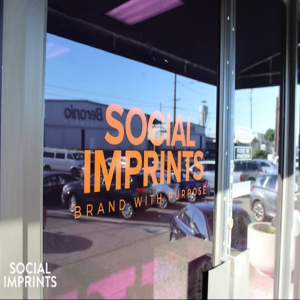
Monday May 05, 2025
The June Cliff for Nonprofit SWAG | Social Imprints
Monday May 05, 2025
Monday May 05, 2025
Social Imprints CEO Jeff Scheinbein warns of an impending June "cliff" for the promotional products industry as Chinese tariffs threaten to disrupt the $25 billion swag market. As a workforce development company where 85% of employees face employment barriers, Social Imprints exemplifies the American social enterprise success story now at risk from trade policies. Scheinbein explains that contrary to political narratives, manufacturing can't simply shift to the US overnight - the infrastructure doesn't exist and would take decades to develop, putting nonprofits and businesses alike in jeopardy when current inventory runs out.
For nonprofits, who "live and die by the bag" at conferences, this disruption threatens a crucial donor engagement strategy. Scheinbein highlights why promotional products offer exceptional ROI: they create a sense of belonging and tribal identity while providing affordable advertising compared to traditional media campaigns. As he explains, outfitting 10,000 people with branded shirts costs just $7-9 per item - turning supporters into walking billboards for your cause at a fraction of what conventional advertising would cost.
Beyond economic concerns, Scheinbein shares that successful promotional products like tote bags (with Trader Joe's boat totes being the single most popular promotional item in the US) and hats deliver the highest visibility, while eco-friendly and socially responsible items represent growing industry trends that align perfectly with nonprofit values.

Monday May 05, 2025
Whole Whale Went to NTC! A Chat About the State of the Nonprofit Sector.
Monday May 05, 2025
Monday May 05, 2025
Nonprofit Technology Conference Insights: Navigating Change and Building Community Resilience
In this special episode of the Nonprofit Newsfeed, Whole Whale's Nick hosts colleagues Axel and Kathleen as they share experiences and insights from the recent Nonprofit Technology Conference (NTC), hosted by NTEN. This premier event for nonprofit technology professionals highlighted the sector's adaptability and resilience in the face of rapid technological and political changes.
Main Topics and Guests:
- NTC Overview: Kathleen introduces NTC as a key event for nonprofit technology, emphasizing its role in networking and understanding sector challenges.
- Key Takeaways: Axel discusses NTC's focus on adapting to current events, including political and budgetary changes, and the strategic use of technology like AI to enhance nonprofit operations.
Critical Insights:
- Adapting to Change: Both speakers noted the conference's emphasis on addressing immediate challenges facing nonprofits, such as economic and political shifts impacting funding and operations.
- AI and Technology Integration: The conference underscored AI's growing role in nonprofit strategies, from fundraising to narrative building. Sessions explored how AI tools can be tailored to nonprofit needs, highlighting both opportunities and ethical considerations.
- Community and Resilience: The speakers emphasized the importance of community and collaboration among nonprofits to build resilience and adapt to ongoing challenges. The conference provided a platform for open dialogue and strategic planning.
Reflections and Calls to Action:
- Building Resilience Together: Kathleen and Axel stress the need for nonprofits to engage in community-driven efforts to navigate uncertainty, urging professionals to attend such events to foster collaboration and innovation.
- Embracing Technological Tools: The discussion encourages nonprofits to leverage technology strategically, ensuring it aligns with their mission and community needs.
